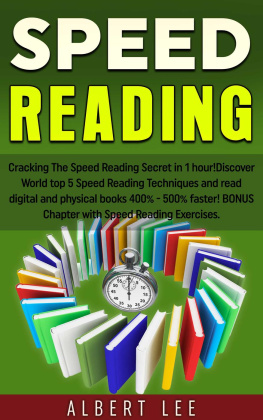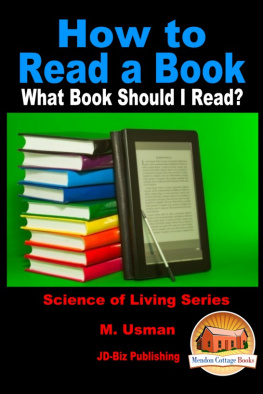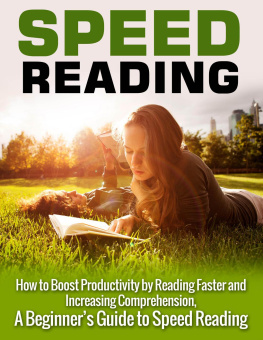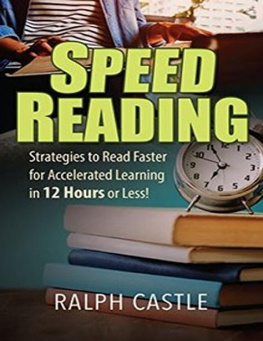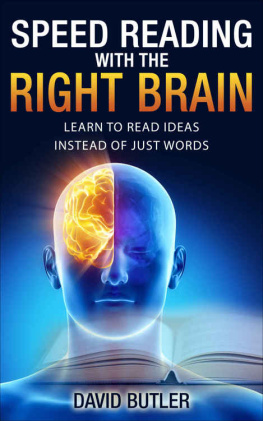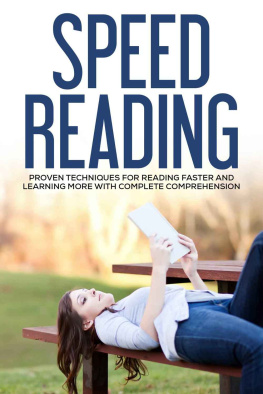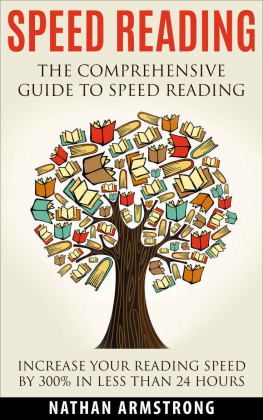Thank you for downloading this Touchstone eBook.
Join our mailing list and get updates on new releases, deals, bonus content and other great books from Touchstone and Simon & Schuster.
C LICK H ERE T O S IGN U P
or visit us online to sign up at
eBookNews.SimonandSchuster.com
CONTENTS
PREFACE
How to Read a Book was first published in the early months of 1940. To my surprise and, I confess, to my delight, it immediately became a best seller and remained at the top of the nationwide best-seller list for more than a year. Since 1940, it has continued to be widely circulated in numerous printings, both hardcover and paperback, and it has been translated into other languagesFrench, Swedish, German, Spanish, and Italian. Why, then, attempt to recast and rewrite the book for the present generation of readers?
The reasons for doing so lie in changes that have taken place both in our society in the last thirty years and in the subject itself. Today many more of the young men and women who complete high school enter and complete four years of college; a much larger proportion of the population has become literate in spite of or even because of the popularity of radio and television. There has been a shift of interest from the reading of fiction to the reading of nonfiction. The educators of the country have acknowledged that teaching the young to read, in the most elementary sense of that word, is our paramount educational problem. A recent Secretary of the Department of Health, Education, and Welfare, designating the seventies as the Decade of Reading, has dedicated federal funds in support of a wide variety of efforts to improve proficiency in this basic skill, and many of those efforts have scored some success at the level at which children are initiated into the art of reading. In addition, adults in large numbers have been captivated by the glittering promises made by speed-reading coursespromises to increase their comprehension of what they read as well as their speed in reading it.
However, certain things have not changed in the last thirty years. One constant is that, to achieve all the purposes of reading, the desideratum must be the ability to read different things at differentappropriatespeeds, not everything at the greatest possible speed. As Pascal observed three hundred years ago, When we read too fast or too slowly, we understand nothing. Since speed-reading has become a national fad, this new edition of How to Read a Book deals with the problem and proposes variable-speed-reading as the solution, the aim being to read better, always better, but sometimes slower, sometimes faster.
Another thing that has not changed, unfortunately, is the failure to carry instruction in reading beyond the elementary level. Most of our educational ingenuity, money, and effort is spent on reading instruction in the first six grades. Beyond that, little formal training is provided to carry students to higher and quite distinct levels of skill. That was true in 1939 when Professor James Mursell of Columbia Universitys Teachers College wrote an article for the Atlantic Monthly entitled The Failure of the Schools. What he said then, in two paragraphs that I am now going to quote, is still true.
* * *
Do pupils in school learn to read their mother tongue effectively? Yes and no. Up to the fifth and sixth grade, reading, on the whole, is effectively taught and well learned. To that level we find a steady and general improvement, but beyond it the curves flatten out to a dead level. This is not because a person arrives at his natural limit of efficiency when he reaches the sixth grade, for it has been shown again and again that with special tuition much older children, and also adults, can make enormous improvement. Nor does it mean that most sixth-graders read well enough for all practical purposes. A great many pupils do poorly in high school because of sheer ineptitude in getting meaning from the printed page. They can improve; they need to improve; but they dont.
The average high-school graduate has done a great deal of reading, and if he goes on to college he will do a great deal more; but he is likely to be a poor and incompetent reader. (Note that this holds true of the average student, not the person who is a subject for special remedial treatment.) He can follow a simple piece of fiction and enjoy it. But put him up against a closely written exposition, a carefully and economically stated argument, or a passage requiring critical consideration, and he is at a loss. It has been shown, for instance, that the average high-school student is amazingly inept at indicating the central thought of a passage, or the levels of emphasis and subordination in an argument or exposition. To all intents and purposes he remains a sixth-grade reader till well along in college.
* * *
If there was a need for How to Read a Book thirty years ago, as the reception of the first edition of the book would certainly seem to indicate, the need is much greater today. But responding to that greater need is not the only, nor, for that matter, the main motive in rewriting the book. New insights into the problems of learning how to read; a much more comprehensive and better-ordered analysis of the complex art of reading; the flexible application of the basic rules to different types of reading, in fact to every variety of reading matter; the discovery and formulation of new rules of reading; and the conception of a pyramid of books to read, broad at the bottom and tapering at the topall these things, not treated adequately or not treated at all in the book that I wrote thirty years ago, called for exposition and demanded the thorough rewriting that has now been done and is here being published.
The year after How to Read a Book was published, a parody of it appeared under the title How to Read Two Books; and Professor I. A. Richards wrote a serious treatise entitled How to Read a Page. I mention both these sequels in order to point out that the problems of reading suggested by both of these titles, the jocular as well as the serious one, are fully treated in this rewriting, especially the problem of how to read a number of related books in relation to one another and read them in such a way that the complementary and conflicting things they have to say about a common subject are clearly grasped.
Among the reasons for rewriting How to Read a Book, I have stressed the things to be said about the art of reading and the points to be made about the need for acquiring higher levels of skill in this art, which were not touched on or developed in the original version of the book. Anyone who wishes to discover how much has been added can do so quickly by comparing the present Table of Contents with that of the original version. Of the four parts, only Part Two, expounding the rules of Analytical Reading, closely parallels the content of the original, and even that has been largely recast. The introduction in Part One of the distinction of four levels of readingelementary, inspectional, analytical, and syntopicalis the basic and controlling change in the books organization and content. The exposition in Part Three of the different ways to approach different kinds of reading materialspractical and theoretical books, imaginative literature (lyric poetry, epics, novels, plays), history, science and mathematics, social science, and philosophy, as well as reference books, current journalism, and even advertisingis the most extensive addition that has been made. Finally, the discussion of Syntopical Reading in Part Four is wholly new.


